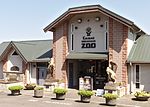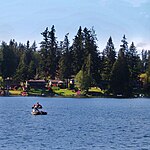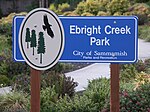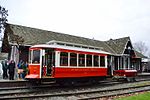Lake Sammamish State Park

Lake Sammamish State Park is a park at the south end of Lake Sammamish, in King County, Washington, United States. The park, which is administered by the Washington State Park System, covers an area of 512 acres (0.80 sq mi) and has 6,858 feet (2,090 m) of waterfront; Issaquah Creek meets with Lake Sammamish within the park. It is a popular location for boating and watersport activities, such as waterskiing. The State Park is accessible from Interstate 90 at exit 15 and the north end of State Route 900. It offers about 250 parking stalls for vehicle/trailer combinations. Local access uses East Lake Sammamish Parkway SE and NW Sammamish Road; both are separate alignments of former State Route 901. Public transit (bus) riders can access the park via Metro Transit routes 200, 216, 217, and 927.The state park is the center of a controversy over the ecological benefits of beavers.
Excerpt from the Wikipedia article Lake Sammamish State Park (License: CC BY-SA 3.0, Authors, Images).Lake Sammamish State Park
Issaquah Creek Trail,
Geographical coordinates (GPS) Address Nearby Places Show on map
Geographical coordinates (GPS)
| Latitude | Longitude |
|---|---|
| N 47.56 ° | E -122.06 ° |
Address
Issaquah Creek Trail
Issaquah Creek Trail
98075
Washington, United States
Open on Google Maps








